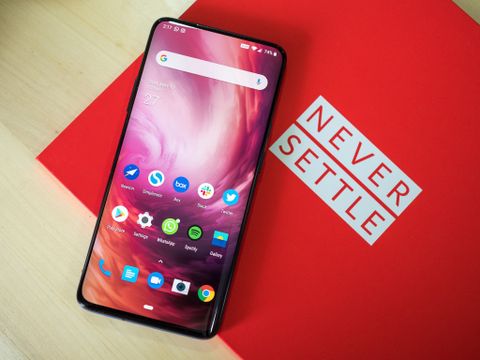Android Central Verdict
Bottom line: The OnePlus 7 Pro continues to be a fantastic choice a year after its launch. The all-screen design without a camera cutout makes it stand out in 2020, and the Snapdragon 855 chipset is just as fast in day-to-day use. The 90Hz display coupled with clean software is a delight to use, and with the phone now selling for $499, you're getting incredible value.
Pros
- +
Stunning all-screen AMOLED display
- +
90Hz refresh rate
- +
Powerful hardware that still holds up
- +
Clean software with no bloatware and regular updates
- +
Decent cameras
Cons
- -
No IP rating
- -
No wireless charging
Why you can trust Android Central
OnePlus phones age very well, and that is particularly true for last year's OnePlus 7 Pro. The device debuted over a year ago with the Snapdragon 855, an all-screen design with a retractable motor for the front camera, QHD+ display with 90Hz refresh rate, 48MP primary camera, and all-day battery life.
A year down the line, the phone is still going strong. The design has held up incredibly well in 2020, the hardware is still robust, and with the phone now selling for just $499, you're getting incredible value here.
I've been using the OnePlus 8 Pro for the last two weeks, and I switched to the OnePlus 7 Pro for a few days to see just what you miss out on when compared to OnePlus' 2020 flagship. And what I found is that there really isn't a whole lot that's different between the two devices. Sure, the OnePlus 8 Pro offers 5G connectivity and has wireless charging and an IP68 rating, but it starts off at $899 — a full $400 more than what the OnePlus 7 Pro is retailing for right now.
So here's why you should consider buying the OnePlus 7 Pro if you're looking to save some cash in 2020.
OnePlus 7 Pro Sublime 90Hz QHD+ display with no cutout
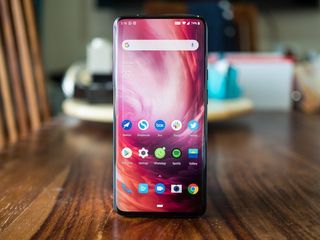
The standout design feature on the OnePlus 7 Pro is the retractable module that houses the front camera. Going this route allowed OnePlus to get rid of the camera cutout, providing an all-screen front. That design looks particularly great in 2020, considering all brands have once again switched back to the dreaded notch — the OnePlus 8 Pro has a hole-punch cutout located on the left.
The OnePlus 7 Pro has a cleaner front thanks to the retractable camera module.
What that means is that the OnePlus 7 Pro and the 7T Pro are the only two phones from the manufacturer to sport an all-screen design without any camera cutout. A combination of 5G connectivity and IP68 rating have necessitated the removal of the retractable module on the OnePlus 8 Pro and other 2020 phones, so if you don't want a phone with an ungainly notch, the OnePlus 7 Pro is a great choice.
The design of the OnePlus 7 Pro itself is very similar to the OnePlus 8 Pro. The phone has symmetric curves on either side (and identical curves at the back), with the glass-and-metal sandwich design looking just as premium in 2020. Most flagships this year have a similar design aesthetic, so the OnePlus 7 Pro fits right in. I also like the deep blue hue on the Nebula Blue color option, and the frosted glass finish makes it easier to hold the phone.





The OnePlus 7 Pro still feels premium a year after its launch, and it's safe to say that the design will hold up for several years to come. Sure, you're missing out on an IP rating, but OnePlus says the phone is water resistant, and for what it's worth my OnePlus 7 Pro weathered being drenched in a heavy downpour without any issues.
Then there's the display. The OnePlus 7 Pro was the first OnePlus device to offer a 90Hz panel, and a year later it's just as enjoyable to use the phone. The QHD+ AMOLED display has vibrant colors and excellent contrast levels, and the fact that you can customize the color balance to your tastes makes it that much more enticing.
OnePlus offers a 120Hz panel on the OnePlus 8 Pro, but the difference between 90Hz and 120Hz isn't as evident as the switch from 60Hz to 90Hz. So if you're using a phone with a regular 90Hz screen, you will love what the OnePlus 7 Pro has to offer. This display is just as fun to use 12 months later, and that comes down to the internal hardware and all the optimizations within OxygenOS.
OnePlus 7 Pro Just as powerful as day one

OnePlus over-engineers its phones, and that means they hold up fine after several years of use. That's the case on the OnePlus 7 Pro as well. The hardware on offer here is incredible, with the Snapdragon 855 in particular still going strong in 2020.
The Snapdragon 855 still has a lot to offer in 2020 — you just don't see any slowdowns.
In day-to-day use, I didn't notice any difference between the OnePlus 7 Pro and the 8 Pro. Apps launched just as fast on the phone, gaming was just as enjoyable, and you get the same great stereo speakers and haptic feedback. From a hardware point of view, the OnePlus 7 Pro is just as great as it was when it debuted a year ago.
The real-world performance is just as reliable a year down the line, and that speaks volumes to the optimizations undertaken by OnePlus here. The OnePlus 7 Pro should continue to deliver in this regard for at least two to three years, and if you're not sold on 5G just yet, it makes a lot of sense to pick up the phone.
OnePlus 7 Pro Decent cameras for the asking price
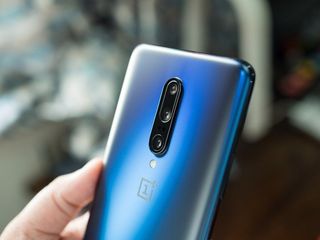
The OnePlus 7 Pro comes with a 48MP primary camera, 8MP zoom lens, and a 16MP wide-angle lens. While the camera wasn't great to begin with, consistent updates following the launch of the phone have fixed a lot of the issues. That said, the phone loses out against the OnePlus 8 Pro in all lighting conditions. Here are a few photos to illustrate my point:

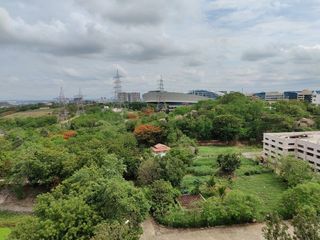
Source: Harish Jonnalagadda / Android Central
OnePlus 7 Pro to the left, OnePlus 8 Pro to the right


Source: Harish Jonnalagadda / Android Central


Source: Harish Jonnalagadda / Android Central
Photos taken with the OnePlus 7 Pro are overexposed, and it leads to colors looking washed out and a loss of detail. By contrast, photos from the OnePlus 8 Pro look vibrant and detailed. Now, you can fix some of these problems by switching to Gcam, but know that the device itself isn't as good as OnePlus' 2020 flagship.
That said, considering what the OnePlus 7 Pro costs now, you are getting a decent set of cameras for the asking price. The phone isn't quite on the same level as the Pixel 3a series, and that's okay.
OnePlus 7 Pro OxygenOS continues to set the standard

The OnePlus 7 Pro debuted with Android 9.0 Pie out of the box, and it picked up the Android 10 update at the end of last year. It will receive the Android 11 update sometime later this year, and that will be the end of its platform updates. It will get security updates for one more year, and OnePlus may even choose to deliver another platform update next year.
OxygenOS is the best third-party skin on Android, with OnePlus providing the ideal balance between customization and simplicity. The interface itself is clean and lacking any bloatware, you get regular updates with bug fixes and security updates, and OnePlus has shown that it can deliver platform updates ahead of its rivals.
And with the OnePlus 8 Pro lacking any differentiating software features, you're getting an identical software experience on the OnePlus 7 Pro with OxygenOS 10. You get meaningful features like Reading Mode, Zen Mode, a built-in screen recorder, system-wide dark mode, Android 10's gesture navigation, and much more, and it's just a delight to interact with the software on a day-to-day basis.
You cannot ask for much more, and when it comes to the software side of things, OnePlus has established itself as the company to beat.
OnePlus 7 Pro A fantastic bargain in 2020
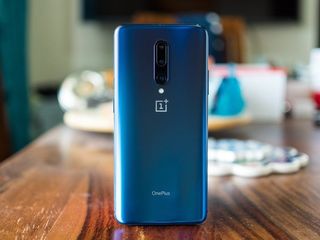
The base variant of the OnePlus 7 Pro with 6GB of RAM and 128GB of storage is available for $499, but the 8GB/256GB option is even better value at just $549. That's just incredible when you look at the hardware on offer.
The OnePlus 7 Pro excels at the basics.
Phone prices have steadily increased over the course of the last 12 months as manufacturers started offering 5G connectivity, and the result is that the base model of the OnePlus 8 Pro starts off at $899. Sure, you get 8GB of RAM as standard now, but the internal storage is still 128GB, and if you just want a reliable phone that excels at the basics, you don't need to pay that much.
That's why the OnePlus 7 Pro is such a great bargain in 2020. The internal hardware will be more than adequate for several years (for some context, the Snapdragon 845-powered OnePlus 6 holds up fine in 2020), the design is just as premium as the latest flagships money can buy, and you get clean software without any bloatware and the promise of quick updates.
OnePlus 7 Pro One year later
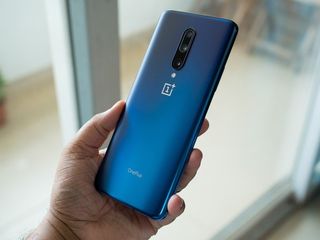
Having used the OnePlus 7 Pro next to the 8 Pro, the one thing that was immediately clear is just how similar the overall experience is across both devices. Even though the OnePlus 7 Pro debuted a year ago, it doesn't feel any slower. If anything, I like the fact that it has an all-screen design thanks to that retractable motor — you just don't get that design anymore with 2020 flagships.
If you don't care about the extras, the OnePlus 7 Pro is an outstanding option at $499.
Yes, you are missing out on a few features. There's no 5G connectivity, IP68 rating (even though OnePlus says the phone is water resistant), or wireless charging. The camera on the OnePlus 8 Pro is also much better, with the wide-angle lens in particular producing photos of the same caliber as the primary 48MP lens.
The OnePlus 7 Pro has the same foundation as the OnePlus 8 Pro: you get a fantastic QHD+ display, robust internals, an evocative design that will hold up for several years, and clean software with quick updates. If you don't need 5G or wireless charging, the OnePlus 7 Pro is a fantastic option in 2020. Just the fact that the phone is available for purchase after 12 months is a big deal. OnePlus generally sells phones for just six months, and then they make way for the latest and greatest. So if you're looking to spend $500 on a phone in 2020, get the OnePlus 7 Pro while it's still on sale.
4.5 out of 5
At $499, the OnePlus 7 Pro costs 55% of what you would pay for a new OnePlus 8 Pro. If you need all the extra features and want to use 5G once it becomes widely available, you'll have to shell out a premium. But if you want to save some cash, you'll love what the OnePlus 7 Pro has to offer. The OnePlus 8 Pro has a lot going for it, but it isn't twice as good as the OnePlus 7 Pro.
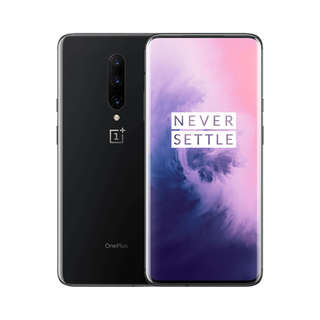
A truly amazing deal in 2020
The OnePlus 7 Pro continues to be a fantastic choice a year after its launch. The all-screen design without a camera cutout makes it stand out in 2020, and the Snapdragon 855 chipset is just as fast in day-to-day use. The 90Hz display coupled with clean software is a delight to use, and with the phone now selling for $499, you're getting incredible value.

Harish Jonnalagadda is a Senior Editor overseeing Asia at Android Central. He leads the site's coverage of Chinese phone brands, contributing to reviews, features, and buying guides. He also writes about storage servers, audio products, and the semiconductor industry. Contact him on Twitter at @chunkynerd.
